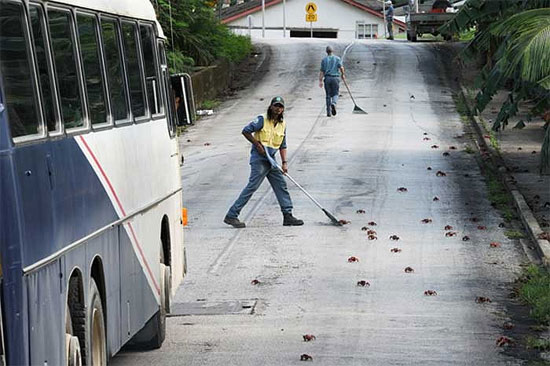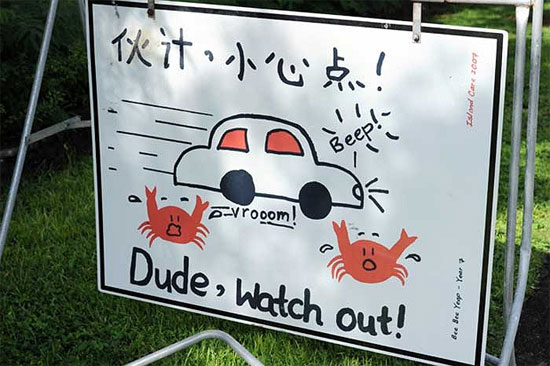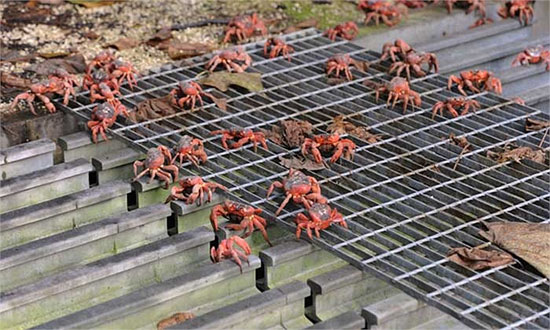Amazingly, the crab island spreads all over the city
Christmas Island, in the territory of Australia, has only about 1,500 people, while there are over 120 million crabs living.

Each year millions of crabs migrate across the island to the sea, their journey can last up to 9km within a month. The staff of the nature reserve on the island every day must be very hard to help the crabs . cross the road, avoiding them to affect the traffic on the island.

The signs were erected all over the island to remind people to drive slowly and observe carefully to limit accidentally killing crabs.
This Red Crab (Gecarcoide natalis) lives in forests in the interior area, but moves to the coast once a year to pair and breed. The people on the island were very familiar with the 'landings' of crabs. They are very dear and have a high sense of protecting them.

Crab trips usually take place during the rainy season from October to January. At peak times crabs are everywhere. People even designed private paths for crabs through roads on the island, avoiding them from being crushed by vehicles.

The crabs face a lot of dangers on the 'pilgrimage' path to maintain their race. The island government set up temporary fences to help the crabs navigate and gather on the way to the beach. Even at peak times, many island roads were closed to avoid affecting the migration of crabs.
Hardly anyone on the island intended to harm crabs. After a difficult journey, the crabs gather on the beach to pair and mate. Then male crabs will return to the forest first, while female crabs have to wait a few weeks for the eggs to ripen to lay eggs in the water.

Female crabs often choose early morning when the tide is rising to lay eggs. Crab eggs when laid into the water will hatch into larvae. A few days later (if survived), the larvae will grow into baby crabs only about 5mm. They have to find their way deep into the interior by their parents, and new journeys begin again.
- The red carpet of crab covered Australia island
- Discover purple crabs in Southeast Asia
- The strange recluse crab suddenly appeared
- Massive 'suicide' purple crabs on the island of Hawaii
- A newly found giant crab
- How scientists protect red crabs when Christmas is in danger
- The appearance of crab is commensurate with the living environment
- Three-colored crabs invaded the Pig Bay in Cuba
- Emperor crabs only eat their feet, why is it so expensive?
- Amazingly, a Hawaiian island was washed out by super typhoon Walaka
- The effect of crab and vegetable secret in crab's vegetables
- How to choose crabs, delicious and meaty crabs
 Is the magnetic North Pole shift dangerous to humanity?
Is the magnetic North Pole shift dangerous to humanity? Washington legalizes the recycling of human bodies into fertilizer
Washington legalizes the recycling of human bodies into fertilizer Lightning stone - the mysterious guest
Lightning stone - the mysterious guest Stunned by the mysterious sunset, strange appearance
Stunned by the mysterious sunset, strange appearance